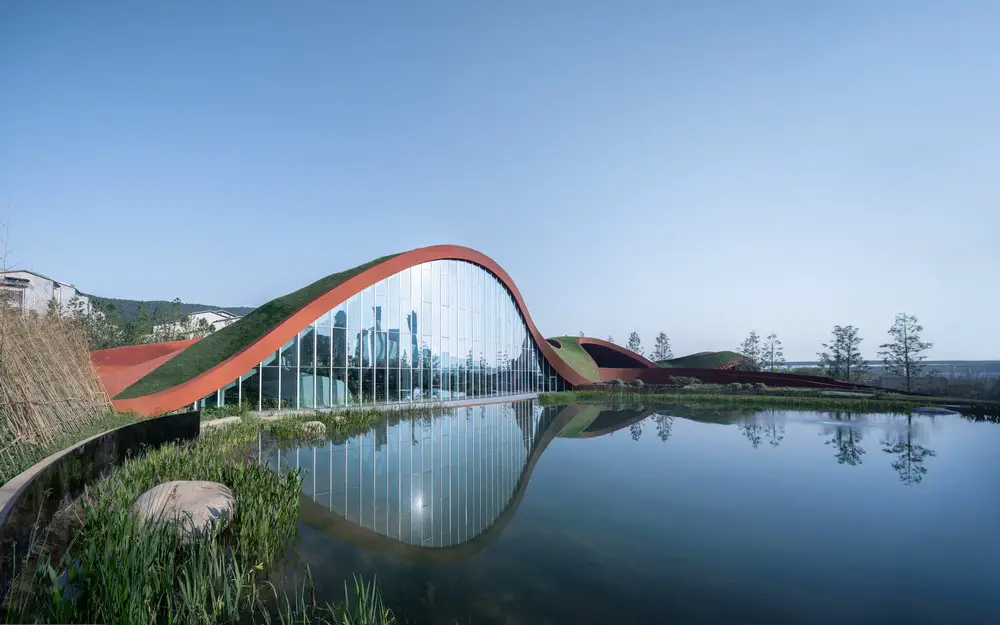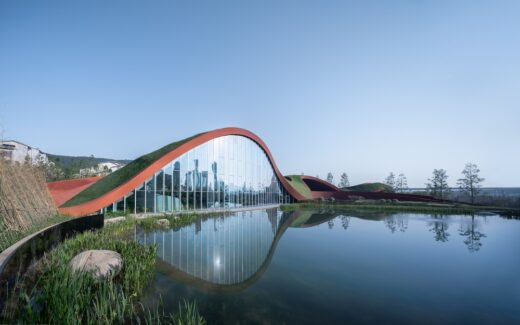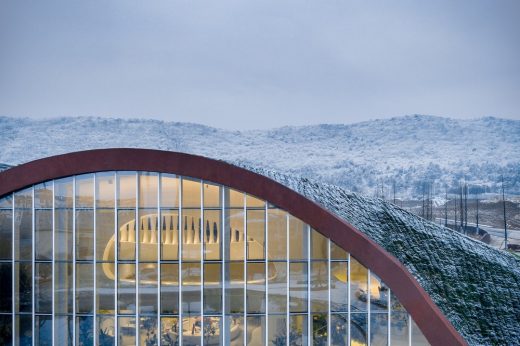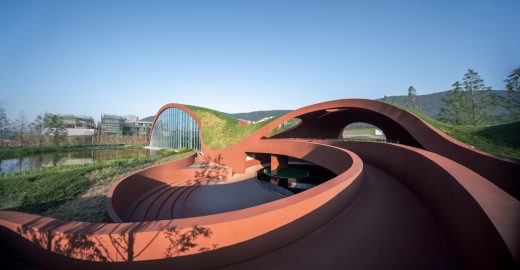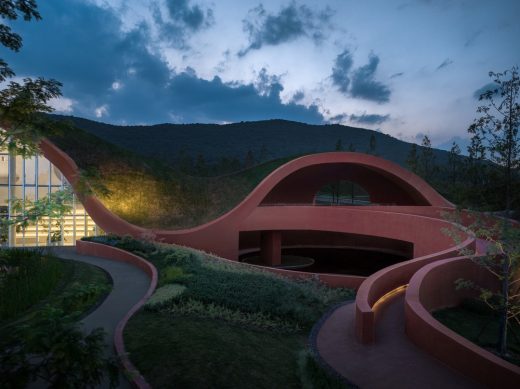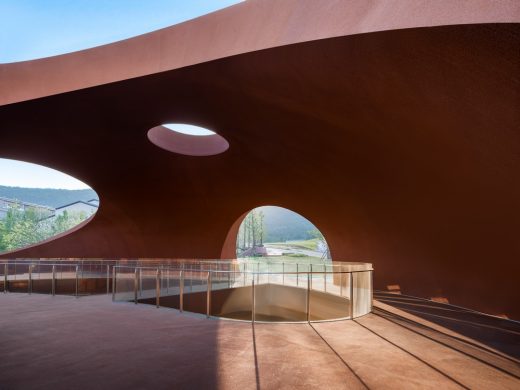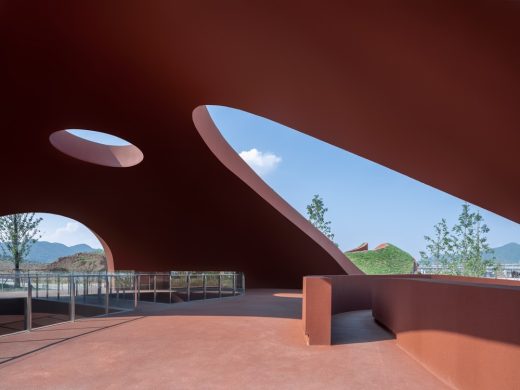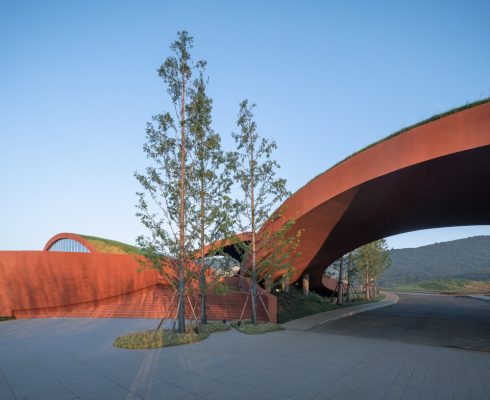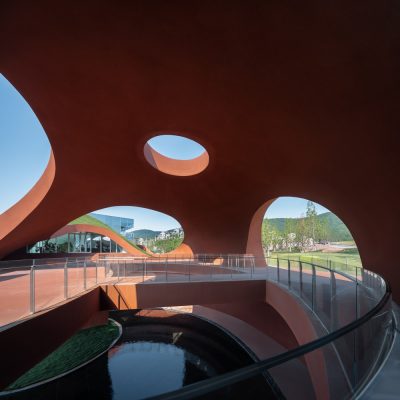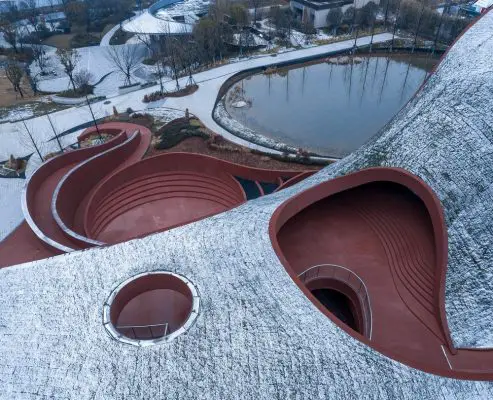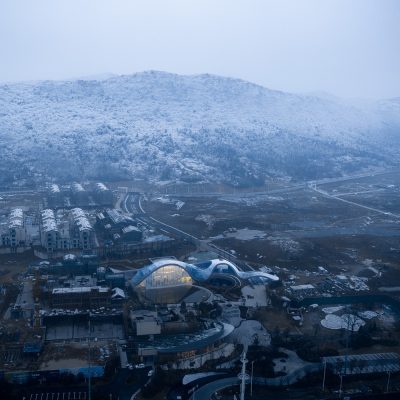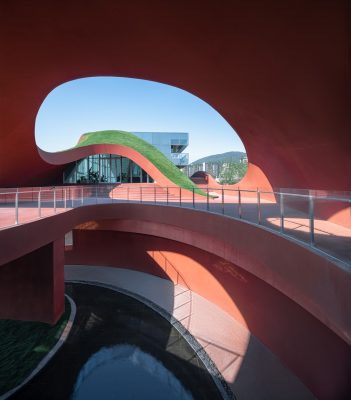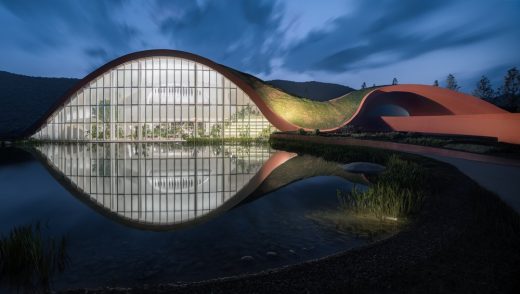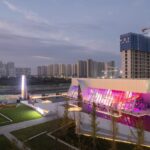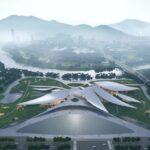OCT Chaohu Natural and Cultural Centre, Anhui, China, Anhui Building, Chinese Museum Architecture Images
OCT Chaohu Natural and Cultural Centre in Anhui
3 Feb 2023
Architecture: Change Architects
Location: Shou County, Anhui, China
Photos @ Wu Qingshan
OCT Chaohu Natural and Cultural Centre, China
OCT Chaohu Natural and Cultural Centre is located at the foot of the mountain between the natural mountains and the city, which stretches for tens of kilometres from northeast to southwest on the north side of Chaohu city. This project could be regarded as a critical point of the local natural environment and urban domestic life. The purpose of architectural building is to demonstrate the indigenous cultural heritage on the one hand, and seem to stand on the fence for the future domestic entertainment life in city on the other hand.
The logic of the architectural cultural centre concept derived from the idea of natural elements. How to make the background of the mountain, the earth ‘s vegetation, geological context and so on to form the body of the building, and through the formation of the building body as a carrier to show the light and shadow, rain and snow, air these smaller elements. In other words, the carrier of architectural design concept is derived from nature. Architecture is no longer just the scale and space required for human activities, but more importantly to express the natural elements that these architects want to display, and on this basis, let citizens and their behaviour activities feel the self-shaping space of the natural element.
The overall plans and elevations of the building are projected by the external shape of the mountain and the earth contour. On this individual building block, the architects began to carry out fascinating and creative imagination about a wiggly worm in the ground: wormholes formed as worms crawl through are the boundary of inside and outside buildings. The wormholes shaped by worm drilling out of the surface (building) that is the result what the architect hopes and deliberately form. This node naturally forms the location of the viewing platform.
Topography is incorporated including the treatment of the relationship with the surrounding environment as a whole. Architecture will embody out the strength that the architect intends to express which include the sense of strength, spaciousness, and the perspective of experience sensation. Thus, the architecture offers an authentic spatial effect, not only focus on whole monolithic architecture, but it also claims incorporate with localization, physical landform and peripheral regions.
‘Low tech’ or ‘high tech’? Is there a more suitable systematic construction control of complex streamlined architectural design for current Chinese local construction techniques?
The structure of the building adopts steel structure to ensure the project construction speed and controllability. On the top and bottom of the structure layer, the roof in-situ pouring and GRC hanging board are combined respectively. At this time, the concrete roof poured on the surface and the inner cavity GRC hanging board are not final layers.
After the construction of the foundation level was completed, the architects used two methods of planting roof and spraying lightweight concrete to complete the shaping of the upper and lower veneer layers. Compared with the curtain wall system, these two methods are both malleable finishes, and their inherent characteristics determine that it must have a better match with the streamlined shape, and greatly reduce the tolerance for accuracy.
Due to the large difference in the slope rate of the building roof, the building adopts a variety of anti-skid treatment strategies. On gentle slopes, large mesh anti-skid partitions are used, while on steeper slopes, dense hole partitions are used. Fill 50mm of formula soil in the corresponding anti-skid partitions of different densities to ensure that the roof vegetation can survive.
OCT Chaohu Natural and Cultural Centre in Anhui, China – Building Information
Architecture Architect: Studio Zhu-Pei
Architect: change architects
Building Area: 1500 sqm
Project Cycle: 2019-2022
Photographer: Wu Qingshan
Design Team: Jiang Qiu, Zhou Yangyang, Shi Chen, Li Baona, Hou Xiaomeng, Jin Xiaoli, Bian Keming, Hao Ziting
Client: OCT East China Group, OCT Hefei Huanchao cultural and Tourism Real Estate Development Co., Ltd.
Local Design Institute: Anhui Architectural Design and Research Institute Co., Ltd.
Landscape Designer: Masters’Architectural Office (M.A.O)
Structural Engineer: Anhui Fuhuang Construction Co., Ltd
Interior Designer: Ipoletz Architectural Consulting Services (Shanghai) Co., Ltd. IFGROUP (Germany)
Architectural Creativity and Design Consultant Architects: Cai Sheng, HAN SONGLI, Yin Wenjun, Hao Xingyu, Qian Jun
Structure Consultant: Shanghai Wilderness Structural Des. Firm Inc.(General Partnership)
Structure Designer: Zhang Yewei
Curtain Wall Consultant: Shanghai Xima Curtain Wall Engineering Consulting Co., Ltd.
Lighting Design Consultant: Jiehan Lighting Design Consulting (Shanghai) Co., Ltd.
Logo Design Consultant: Beijing Tushi Space Creative Design Co., Ltd.
FF&E Consultant: Shanghai KEYI Architectural Design Co., Ltd. (KOYI)
Photography @ Wu Qingshan
OCT Chaohu Natural and Cultural Centre, Anhui, China images / information received 030223
Location: Shou County, Anhui, China
Architecture in China
China Architecture Designs – chronological list
Chinese Architect – Design Practice Listings
Han Shang Lou Restaurant, Phoenix island, Xiangqiao District, Chaozhou, Guangdong Province
Architects: Jingu Phoenix Space Planning Organization
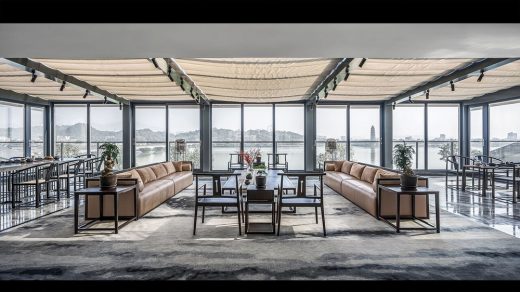
photograph : MConcept
New Restaurant in Guangdong
Xiamen HAIGAN Xiaoyouyu Seafood Restaurant, Huli District, Xiamen City, Fujian Province
Architects: Xiamen Fancy Design & Decoration
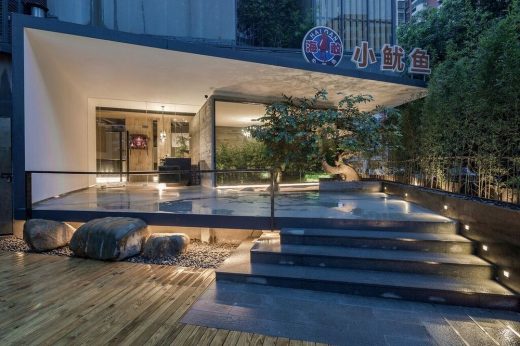
photograph : Jin Weiqi
Seafood Restaurant in Xiamen City
Xixi National Wetland Park in China
Keppel Cove Marina & Clubhouse, Zhongshan, Guangdong
Design: UNStudio, Architects
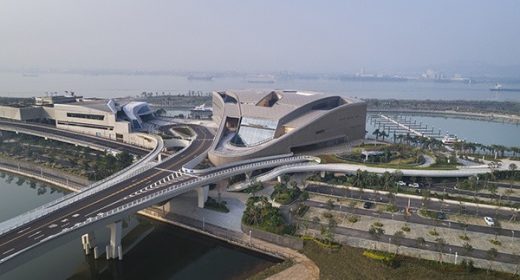
photo : Tom Roe
Marina at Keppel Cove Zhongshan
Comments / photos for the OCT Chaohu Natural and Cultural Centre, Anhui, China designed by Change Architects page welcome

